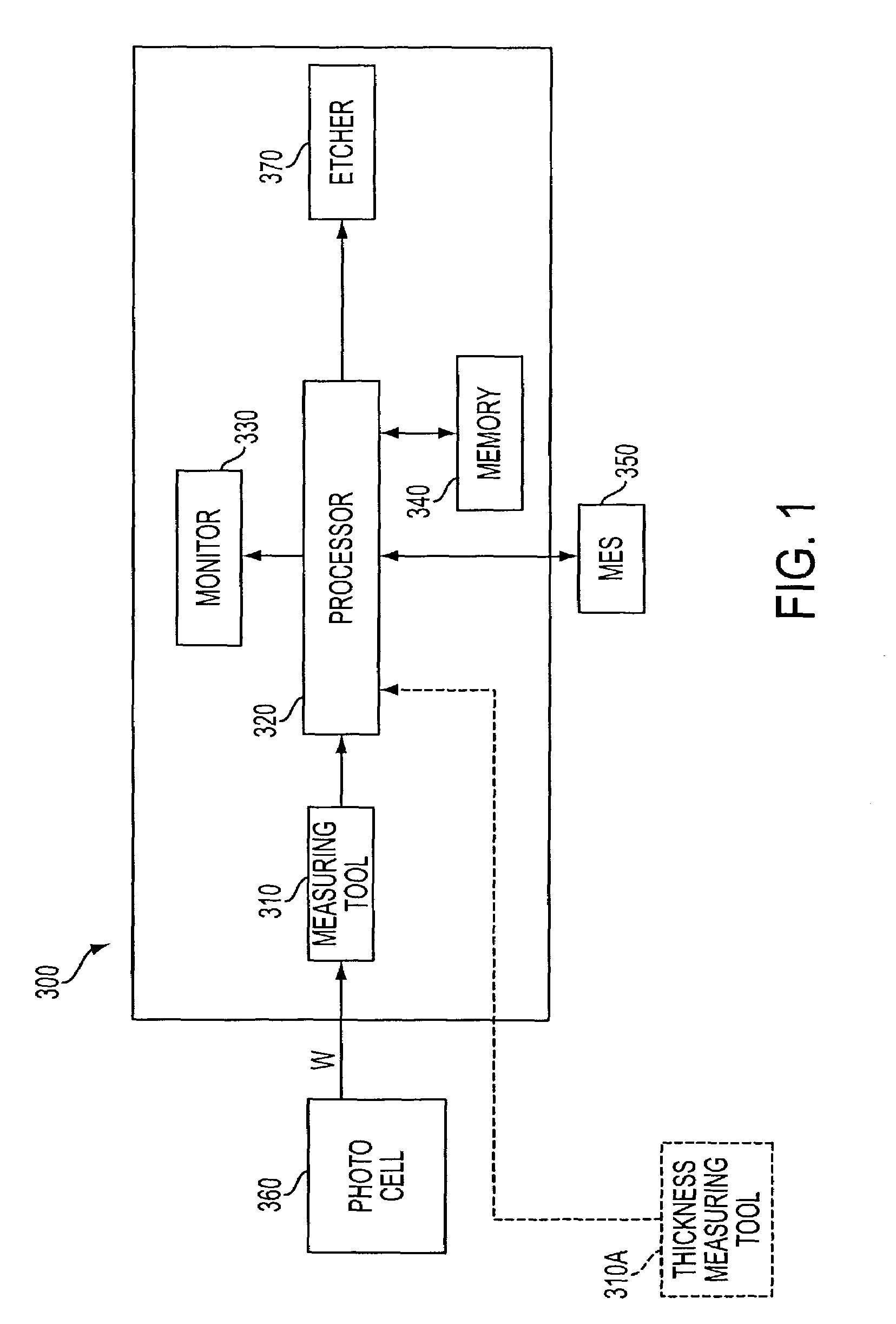Method and apparatus employing integrated metrology for improved dielectric etch efficiency
a technology of dielectric etching and integrated metrology, which is applied in the direction of semiconductor/solid-state device testing/measurement, instruments, and therapeutics, etc., can solve the problems of affecting the performance of finished semiconductor devices, unable to measure important parameters, and unable to achieve photoresist loss, so as to reduce cd variations in semiconductor wafers and reduce throughput
- Summary
- Abstract
- Description
- Claims
- Application Information
AI Technical Summary
Benefits of technology
Problems solved by technology
Method used
Image
Examples
Embodiment Construction
[0027]Conventional methodologies for in-process inspection of features formed on the surface of semiconductor wafers are not capable of analyzing CD and / or profile deviations from design rules in sufficient detail to provide information leading to early positive identification of the source of the defect or enabling process control to reduce dimensional variation. The present invention addresses the problem of CD control by reducing the CD variation by feeding forward information relating to photoresist mask CD and profile, and underlying layer thickness measured at several points on the wafer to adjust the next process the inspected wafer will undergo (e.g., the etch process). In certain embodiments of the present invention, the CD, profile and thickness measurement, etch processing and post-etch cleaning are performed at a single module in a controlled environment, thereby increasing throughput and improving yield. Thus, the present invention provides a self-contained etch module ...
PUM
| Property | Measurement | Unit |
|---|---|---|
| diameter | aaaaa | aaaaa |
| thickness | aaaaa | aaaaa |
| dimension | aaaaa | aaaaa |
Abstract
Description
Claims
Application Information
 Login to View More
Login to View More - R&D
- Intellectual Property
- Life Sciences
- Materials
- Tech Scout
- Unparalleled Data Quality
- Higher Quality Content
- 60% Fewer Hallucinations
Browse by: Latest US Patents, China's latest patents, Technical Efficacy Thesaurus, Application Domain, Technology Topic, Popular Technical Reports.
© 2025 PatSnap. All rights reserved.Legal|Privacy policy|Modern Slavery Act Transparency Statement|Sitemap|About US| Contact US: help@patsnap.com



